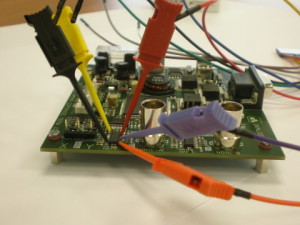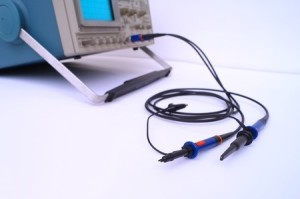Why we don’t use a logic analyzer probe to capture analog waveforms
über

Mixed signal oscilloscopes or MSO’s, scopes that integrate a Logic Analyzer, have been around around for ages. They are undoubtedly super useful pieces of equipment for any electronics engineer (or even hobbyists!). However, recently some firms started releasing Logic analyzers that support analog capturing. In this article, I’ll be explaining why we don’t think it’s a good idea.
Disclaimer: Before I continue, let me stress on the fact that I believe the companies releasing such devices are very respectful and respected competitors, i am just informing our position on the subject, to whom it may concern!
So, to put things simply, we think that a logic analyzer whose probes can be used to capture both analog and digital signals would end up being a toy, an expensive one, but not a reliable measurement device. Here’s why:
Sampling rate is not bandwidth
Look carefully at the analog sampling rate of that analog-capable logic analyzer. Chances are it will be below 100 MSPS (million samples per second). This may be due to hardware or economic limitations. What ever the reason is, 100 MSPS is not even close to what you’re used to have on a classic low cost Scope.
With a sampling rate of 100 MSPS, you can only start to clearly see analog signals having a frequency of 5 MHz (like a square wave clock signal). With a sampling rate of 10 MHz, don’t expect to reliably capture any analog signals having a frequency higher than 500 KHz. This, is in many cases, makes such a device, well… useless.
What that means is that you would get a half-baked scope-like features that can’t compete with the lowest cost Rigol scope on today’s market! We don’t want to offer you that! not even for free!
Logic Analyzer probes are not oscilloscope probes
If you are info electronics in a way or another, you would probably recognize in a glance what’s in the picture below. Good old oscilloscope probes! (and the tektronix scope laying on my desk, by the way!).
Oscilloscope probes may have evolved a lot during past decades, but some of it’s mains characteristics remain:
- They are shielded
- They have very low inductance
- They are compensated for their stray capacitance
- They have attenuators that further decrease their loading on the circuit.
I could write a lot about each and every one of those features, but the bottom line is: those probes will capture very low voltage signals with high degree of fidelity, without impacting the operation of the measured circuit.
Again, what that means, is that logic analyzer probes cannot be used to measure analog signals. Those probes are quite susceptible to transient noise.
A Scope, a Data Logger or a Logic Analyzer
 You can’t have those three features in one low cost device. Even if you would find such a device, would you really want it? Those three kinds of devices exist independently for a reason. If there is no reason to have those devices combined “all-in-one”, then you’ll be better off using each device independently.
You can’t have those three features in one low cost device. Even if you would find such a device, would you really want it? Those three kinds of devices exist independently for a reason. If there is no reason to have those devices combined “all-in-one”, then you’ll be better off using each device independently.
- An oscilloscope’s design is optimized to collect a small amount of data but at a very high refresh rate
- A Logic analyzer is optimized to capture a important amount of data while performing real time or near real time processing and decoding of the data.
- A Data logger is designed to capture huge amount of brute data without any real time analysis or processing. Data may be analysed after being collected.
As you can see each device is optimized in such a way to give you maximum usability for specific applications, and that’s why we are careful when combining multiple functions in one device.
Source: Ikalogic



Diskussion (0 Kommentare)